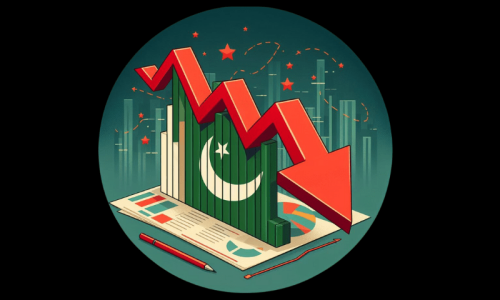Everyone is concerned about agricultural growth prospects during 2015. They cite three factors: poverty (as a majority of farmers are unable to invest in crops), the confusion about the federal and provincial governments’ jurisdictions, and climatic changes that make the production cycle uncertain.
The farmers have lost money on almost all major crops — cotton, rice, cane and wheat during 2014; in many cases they were not able to recover even cost of production if official estimated costs are something to go by.
The cost of each maund of cotton was stated to be Rs3,200, which was sold at Rs2,500 per 40Kg; cane cost was Rs194 per maund, but fixed at Rs180; rice prices dropped by almost 50pc as compared to last year, and the federal government had to come up with a subsidy package to save farmers from total disaster.
For cotton growers, the government had to induct the Trading Corporation of Pakistan (TCP) to support market price to some extent. Under these circumstances, the farmers have precious little to invest on next crops that dims prospects for 2015.
The farming community is caught between falling income and rising cost of inputs and it could define the prospects of agricultural growth during 2015.
The farmers’ ability to invest on inputs has always been a crucial factor, which seems to have been significantly lost. On the other hand, the cost of inputs — barring a temporary relief on diesel — keeps rising for a number of factors; cartelisation of the market and small players greed to reap windfall every season being prime factors.
The urea position clarifies the point. Despite heavy imports, dealers are unwilling to bring prices down to official level and the Punjab government is currently readying to crackdown on urea black-marketing. It had already lodged a number of FIRs for pesticides overcharging.
The farming community is thus caught between falling income and rising cost of inputs and it could define the prospects of agricultural growth during 2015.
This situation is afflicted by another factor; confusing mandates of federal and provincial institutions about which one is supposed to do what. The Eighteenth Amendment’s devolution is still to be absorbed by the provincial governments.
The recent row on cane prices clarifies the point, where the provincial governments of Punjab and Sindh acted differently; causing social upheaval and the federation siding with the farmers. The vacuum in some other areas is even bigger. For example, the federation has a post Animal Husbandry Commissioner (commonly known as chief veterinarian) but it is lying vacant for the last one year.
Pakistan Agriculture Research Council (PARC) has a post of a member, Animal Science, which has not been filled ever since the last one retired and the chief executive officer of the Federal Livestock Board is missing for the last two years.
This vacuum at the federal level is yet to be institutionally filled by the federating units. On their part, what provinces are doing is best exemplified by Punjab; during the last few years, it has nominated around seven different committees on livestock with grossly overlapping mandate and memberships, creating utter confusion.
Without any institutional input, decision-making is hijacked by lobbies, which has managed to bring cane prices down for a week or so and made billions of rupees out it; they managed duty-free import of skimmed milk and started manufacturing milk at the cost of farmers. This confusion on mechanism, mandate and decision-making, in all probability, would continue during the next year and test agricultural abilities of the farmers and farming.
To top them all is water scarcity, exacerbated by climatic changes and Pakistan’s inability to respond to it through a well thought-out planning and strategy. In a recent report, the State Bank of Pakistan had termed climate change not just a global debate, but a major threat to Pakistan; particularly, when it raises risks for food security.
Estimating that temperature might rise by another 0.6 to one Celsius by 2030, the central bank warned that the change may take down wheat production by 1.5-2.5pc and rice by 2-4pc by 2020. Vegetables and livestock would also have their list of risks.
The University of Agriculture, Faisalabad, which has a full-fledged department on climatology, also sounded a similar warning when dividing the entire 21st century into three periods (up to 2040, 2070 and the rest), it says that the average day temperature would increase by 2.8 Celsius by 2040. Even more threatening is rise in the night temperature by 2.2 Celsius during the same period.
Both these major problems and their solutions or ways fully documented.. In the last four years, the country has had three floods because of erratic weather behaviour and still reeling under its damage. This is the area that needs immediate and full attention of the government.
Published in Dawn, Economic & Business, December 29th, 2014











































